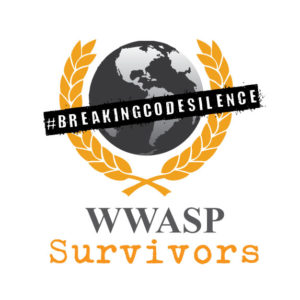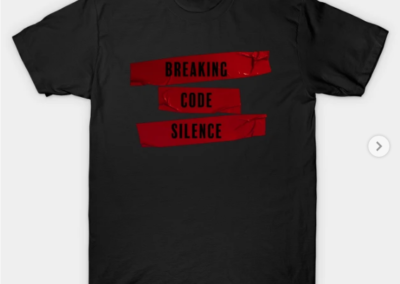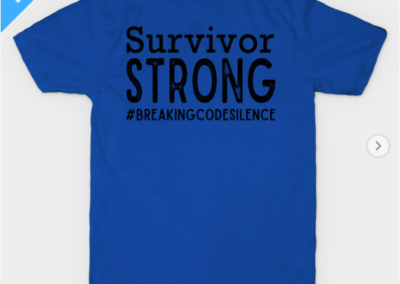Having trouble keeping up with all the contradicting statements by Ben and his staff during the Ben Trane trial? Us too! To make it easier for everyone, we decided to make this post about all the conflicting statements the administrative and clinical staff said before, during and after the trial.
Q. Why was Cheyenne Jerred fired?
Cheyenne Jerred: For counseling students
Q. Did they tell you why they fired you?
A. For trying to counsel students.
Michael Davis: Insubordination for refusing to not give “counseling” to the girls
Q. Was your concern in that about doing something contradictory to what you may be doing in counseling?
A. Well, certainly that would be of concern. In fact, that’s something among therapists that we’re very careful about, not being at cross purposes with another therapist for the very same reason.
Q. So the first meeting was just a discussion with her about, don’t do this?
A. Yes.
Q. And what did she say?
A. She said she was going to do it if she thought she needed to. She basically told me that she intended to continue doing it.
Q. And what did you regard that as?
A. Insubordination.
Q. What was your understanding of the reason that Cheyenne was terminated?
A. I don’t remember to be honest with you . I don’t remember exactly what the reason was. I think part of it was that she was refusing to follow staff direction.
Q. Insubordination?
A. Yes.
Q. Who actually terminated her?
A. Devon did.
Jane Riter: For counseling students
Q. And that afternoon Cheyenne Jerred was called in?
A. Correct.
Q. You were in that meeting?
A. Yes, I was.
Q. And she was instructed to not be counseling with the students at night?
A. Correct.
Q. Cheyenne Jerred was fired a couple days later?
A. Correct.
Ben Trane at the trial: For not reporting the abuse allegation immediately.
Q. Why did you fire Cheyenne Jerred?
A. Do you want me to tell you the story?
Q. We’ve heard the story. I’m asking you–
A. We haven’t heard the —
Q. –for what reason —
A. Cheyenne Jerred was fired because —
Q. –did you fire Cheyenne Jerred?
A. –she did not report abuse for a week until we found out.
Q. So now you’re saying — You’re saying that she was fired because she didn’t tell you about the abuse?
A. That’s what– That’s– You have the termination. You can read that. What has been printed is all absolute fabrication.
Q. Well, she has been fired —
A. Yes.
Q. –for insubordination?
A. She knew about this. She had information about abuse, alleged abuse, for over a week and did not tell anybody.
That’s why she was called in. She was called in to gather the information that she possessed. She made the phone call in the parking lot to DHS because she thought she was going to be fired for not telling and for counseling because she knew what she did was wrong.
Q. Was there a special diet in OSS?
Victim’s Mother: Yes. Her son would eat peanut butter and jelly the majority of the time in OSS and Gary even asked her what her son’s most hated foods were so they could use that as a punishment.
The meals that they had were–two meals was peanut butter and jelly, bananas and raisins. One meal was lunchmeat with bananas, raisins, I believe.
A. I could have. We were trying to do everything we could to help him. Everything that they said, that we were
being told by Midwest was this was going to help. Eventually, the OSS didn’t help and Gary talked to us about doing special meals.
Q. What’s a special meal?
A. They ask us what kind of food Dxxx likes and what he dislikes. So they would–instead of getting the peanut
butter and jelly, I told Gary that Dxxx didn’t like tuna and spinach, so he was served–it would be a nutritious meal, but it would be foods that he didn’t like.
Cheyenne Jerred: The girls would complain about not having food.
Q. Did you ever have concerns about how the OSS rooms were used?
A. Yes.
Q. What was that?
A. Just the way that some of the girls stayed in there for a long time. I know a lot of them complained about not having food, or being in there for a long time, and about the tapes that they played.
Stephen Jansing: There were OSS meals that largely consisted of peanut butter and jelly sandwiches. OSS meals were used as a punishment.
Q. Were there times that kids would be caught taking more food–
A. Absolutely.
Q. –than they should, stealing?
A. Yeah, absolutely.
Q. What would happen?
A. They were put on what was called OSS meals. And that was pretty much, from what I recall, like a peanut butter and jelly sandwich for a whole day. You know, each meal you had one. You know, and you had a side like a pickle or something like that, but yeah.
Q. So if they tried to get extra food, then consequence, and then you get special meals?
A. Yep.
Q. What were they fed?
A. In the morning it was usually like a breakfast item, like a piece of an egg or some sort of egg-type thing, a little carton of milk. And then lunch and dinner it was mostly OSS meals. It was the special meals where it was just like a peanut butter and jelly sandwich with a side of pickles, for example, and a glass of water, you know.
Q. Did the kids ever tell you they were hungry?
A. Of course.
Gary LaChapelle: He had asked victim’s mother about a special diet but didn’t give it to him. He thought that OSS was the same food as outside except some slight differences and breakfast.
Q. Did you talk to [victim’s mother] about special meals?
A. [victim’s mother] and I talked about special meals, and she basically told me that that wasn’t something she wanted to do. So I never authorized anybody to feed him special meals.
Q. But you asked her?
A. I did.
Q. And when you asked her, you wanted to know what food did Dxxx hate?
A. Correct.
Q. And the reason was, is because with special meals you would feed kids the foods that they hated; correct?
A. That’s correct.
Q. And again, that was a consequence. That was to teach them these life lessons of, if you do as you’re told then–
A. No. It was to get them out of OSS.
Q. To give them food that they hated?
A. If you don’t like something — And I guess I’ll say like, again, if it were me, would I want to be OSS? No. I would sit there and do what I had to do to get out of OSS. So again, you’re focusing in on special meals that never occurred with Dxxx.
Q. I understand that. But you asked
about them?
A. I did.
Q. We’ve heard a lot of testimony regarding the food in OSS. Was the food served in OSS different than what was served to the other students?
A. I think at breakfast time, there was like a peanut butter and jelly sandwich and an apple or an orange. But there were many mornings that I would go in with Dxxx, and I would bring him oatmeal. But as far as lunch, my recollection is lunch was the same for people in OSS that it was for anybody else, even staff. I mean, we ate lunch in there. We would get that. Now, they would not–if they were in OSS, I mean, obviously there was some restrictions, i.e., they wouldn’t have the condiments. So for instance, if they had a salad they wouldn’t have any salad dressing on it if they had a salad or something like that.
Michael Davis: They did have special meals in OSS and they were a “consequence” for the student’s actions
Q. And the policy behind special meals in OSS?
A. The policy behind that I believe also was a form of consequence.
Q. You would agree that a lot of the OSS room structure was punitive in nature?
A. If what you’re asking me is it designed to be a form of punishment, I suppose you could call it punishment. I prefer to use the word consequence. It’s a consequence for behavior, yes.
Ben Trane at the trial: They ate peanut butter and jelly sandwiches because the kids loved them but at times they would get normal meals too. Note: Ben had to tell about the peanut butter and jelly sandwiches because he knew the prosecution had the OSS logs and they did make him read some of them back on cross examination showing one of the victims received almost nothing but peanut butter and jelly sandwiches in OSS for his first few days at the school.
Q. And would you agree that they were fed different meals than what the other students had outside of OSS?
A. At different times. I mean, that was something that was very fluid. I mean, for a period of time — They loved peanut butter and jelly sandwiches. The kids at the school love PB&Js. I mean, they would eat them ; they would ask for them for instead of the salad bar if they could make it PB&Js. They loved it. So one of the things to help with OSS, because it is a finger food, it made a lot of sense to give them something like that that, you know, high calorie, fairly filling with pe anut butter and bread, and then milk and fruit. It was a good meal for OSS because they couldn’t hurt themselves, and it was a fairly healthy meal. But sometimes, you know, in OSS they would get the normal meals. I mean, that wasn’t like –that was something that changed periodically and many times over the fifteen years.
Q. Was there a 24 hour minimum rule in OSS?
Victim’s Mother: She was told by both Ben and Gary there was a 24 hour rule for OSS.
Q. Were you concerned about those rooms?
A. I was. I remember talking that we didn’t think that Dxxx would be the type of child that would be in that room. If he would, it would be maybe twenty-four hours and released. That’s what the typical OSS time was, was twenty-four hours, and then they were released.
Q. And who told you that?
A. I heard that from Ben and then again from Gary Lachapelle. I might have said his name wrong.
Q. I can. That was a really bad question. What was your understanding of what was supposed to be happening when he was in OSS?
A. While in OSS, like I said, they were supposed to be in there for twentyfour hours. They were to sit in structure for nineteen hours. That’s where they are–if I remember right, that’s where they sit on the concrete floor with their legs straight out and their hands in their lap. They could have their mattress and a blanket that they could keep up to their chest level at night when it was bedtime. The overhead lights would stay on, the fluorescent lights. If he sat in structure for nineteen hours, then he was able to get a chair, to sit in a chair. Then at hour twentythree, he was to write a 1,000-word essay reflecting on what took him to the OSS room. Then on hour twenty-four, if he complied with all the rules, he would be taken out. However, if you broke structure one time in that nineteen-hour period, your time started over.
Stephen Jansing: There was a 24 hour rule for OSS.
Q. All right. What were the rules for OSS? If I was placed in OSS, what are my expectations?
A. Your expectations were to basically sit in structure for a certain amount of time, whether that was twenty-four hours, forty-eight hours, whatever it was. And after that, typically you would write an essay assigned by the shift leader or the family representative, 1,000, 2,000, 3,000 word essay, et cetera, on a certain subject. And once you get your structure time, then you would go on to the essay and youd work on the essay. And then once the essay was completed, the family representative would come in with the shift leader, or the shift leader would come in and say, okay, you know, and take them back to the family.
Q. Could your time in OSS increase? You talked about sometimes maybe it would be for twenty-four hours or forty-eight. Could it increase if you were getting into a lot of trouble and being in there a lot?
A. Yes, absolutely. If they were constantly in OSS, in and out, in and out, usually the family representatives and the shift leaders would pay less attention to you and would focus on–and just say, you know what, well see how it goes, and usually it would just constantly increase. You know, the student wouldnt sit in structure, you know, the motivational tapes were playing through the speakers in their rooms, and the reps would rarely
Gary LaChapelle: The children would have to stay in OSS for at least 24 hours.
Q. Once the students were in OSS, what were they required to do?
A. They were to sit and follow directions. They were supposed to be in there for twenty -four hours. If they followed directions, they would get out the next day.
Q. Did students always stay in there for the full twenty -four hours?
A. I would say most of them did, and it was just twenty-four hours.
Jane Riter: It changed to 2-3 hours but she could take people out earlier than 24 hours even before that change.
Q. When OSS had the twenty -four hour requirement, could you as a therapist still go ahead and remove someone from OSS if you felt it was appropriate?
A. I think we could, yes. It was later on, like into the second year that we could do that.
Q. What was your understanding of how OSS worked?
A. That a student would be placed in there. They had to be quiet for three or four hours, and then the door was opened. They got a chair. They could carry on a working conversation with the other students in there or staff. They could talk to the counselors. If they were quiet, then they got out the next morning.
Michael Davis: It was 24 hours in the beginning but it changed over time.
Q. And the minimum time someone could be in there was what?
A. Well, in the beginning I believe the minimum was twenty-four hours. In the end, we had some variability. We could make some determination and often did get them out of there much sooner than that.
Layani Trane: She never remembers a 24-hour rule for as long as she started at the school.
Q. If a child was placed in OSS by a staff member, was there a set time that they were expected that they were going to be in that room?
A. So typically it would just be when they were sitting calm and had time to cool off and de -escalate. It could be –depending on various –on the behavior. It could be, you know, I needed twenty minutes or there might be a two-hour de-escalation. It just depends on the time of when they de -escalate. If I chose to go in there for anxiety, I just need a few minutes, and called up and talked to the rep, and the rep is, like, yes, lets take that and that could happen.
Q. So they werent required to be there for a solid twenty -four hours?
A. No.
Q. But just long enough to calm themselves?
A. Uh-huh (in the affirmative)
Q. Theres no twenty -four hour time
limit?
A. When I started thats –that was what I knew when I started.
Q. When did you start?
A. I started in seminars a few years before I started as a family rep. And a family rep, I want to say –Im trying to– I dont remember when I started the family rep position. Sorry. If I got something, I could help answer that.
Q. Theres no twenty-four hour time limit?
A. When I started thats –that was what I knew when I started.
Q. When did you start?
A. I started in seminars a few years before I started as a family rep. And a family rep, I want to say –Im trying to– I dont remember when I started the family rep position. Sorry. If I got something, I could help answer that.
Ben Trane at the trial: There was a 24 hour rule but they were adopting DHS’s regulations when he made it up in 2005. During his testimony, Ben Trane was forced to read the student manual where it stated there was a 24 hour minimum.
In 2005, DHS gave us the regulations in the Iowa Code of a comprehensive residential facility and said, even though there’s no licensing that you need or fall under, these are the regulations of the kind of a treatment center or a residential facility like yours. And so it has a description of rooms that you can make with certain sizes, certain dimensions, all the things that are specified by the State. So we redid our rooms that way. And that’s when–there’s a twenty – four hour rule for theirs. So we adopted a twenty-four hour rule. And —
Q. And it goes into page 28. On paragraph 6, read the first sentence for us.
A. “In order for OSS students to return their family, they must be in structure for a twenty-four hour period. Structure is defined as sitting calmly with hands and feet clearly visible.”
Q. That’s fine. I just wanted that first sentence. So it was minimum twenty – four hours; correct?
A. As a general rule of thumb, yes.
Q. Did children have to sit still and in structure during their time in OSS? Were children denied a mattress at night for not sitting in structure?
Victim’s Mother: She was told her son would have to sit in special structure for that time and if he moved, his time would restart.
A. Yes. It was always–I was always told it was Dxxx’s choice to stay in OSS because he knew what the expectation was to get out. The expectation was to sit in structure, not talk, and after twenty-four hours, after he wrote is 1,000-word essay, he could get out.
Q. So sitting in structure for nineteen hours, a good portion of that was going to be actually sleeping?
A. There were some hours there, maybe six or seven hours there.
A. While in OSS, like I said, they were supposed to be in there for twentyfour hours. They were to sit in structure for nineteen hours. That’s where they are–if I remember right, that’s where they sit on the concrete floor with their legs straight out and their hands in their lap. They could have their mattress and a blanket that they could keep up to their chest level at night when it was bedtime. The overhead lights would stay on, the fluorescent lights. If he sat in structure for nineteen hours, then he was able to get a chair, to sit in a chair.
However, if you broke structure one time in that nineteen-hour period, your time started over.
Stephen Jansing: You had only a couple positions you could sit in and if you scratched your leg or do anything but sit still, it would restart your time. Not sitting in structure could mean you lose your mattress privileges. You could not wait it out – you had to sit structure to get out of OSS.
Q. What do I have to do to sit in structure? What does that mean?
A. Usually it was like Indian-style, or just like laying like this (indicating) with your back against the wall.
Q. And just for the record, you put your legs straight out in front of you?
A. I did. I put my legs straight out in front of me and put both my palms on my knees, and my back against the wall, like a 90-degree angle.
Q. And how long am I supposed to sit for that?
A. It was usually up to the shift leader, but Ive seen some kids that were assigned seventy-two hours in structure, forty-eight hours, twenty-four hours.
Q. So Ive had my back against the wall, my legs are out straight, my hands are on top of my legs. And I have an itch, and I itch the top of my head like this (indicating), what happens?
A. The staff is supposed to document that as breaking structure and then, you know, you would basically–the shift leader would occasionally call down and ask how the kids are doing, and then he was supposed to get the report, you know, that so-and-so itched four or five times without asking for the ability to. Usually the students would raise their hand, and then the staff would call on them, and then they could say, can I please, you know, take a drink of water, can I please itch, use the bathroom, et cetera.
Q. How often would I be allowed to use the bathroom?
A. Some kids would choose to ask many times, you know, just to get out of the rooms, not really use the bathroom. Sometimes they were told no, youre going to have to wait. But for the most part, I mean–everyones different, you know, butyeah.
Q. What if my–again, Im sitting there and my legs are straight out, what if my legs fall asleep and I want to move? Can I move to a different position?
A. You could. And you would also have to ask the staff for that.
Q. And how do I do that? I raise my hand?
A. Raise your hand. And through the cameras the staff would see that you raised your hand and say, you know, what do you need, or how can I help you, and then you would ask to move positions, etcetera.
Q. Was there only certain positions you could move to?
A. Yes.
Q. What were those?
A. The ones I recall, it was Indian-style with legs crossed, and then it was the back against the wall with your hands on top of your legs. Those were the main two that I know of.
Q. If I go into OSS at 8 oclock inthe morning, is that what Im doing all day long?
A. Yes.
Q. Do I get to do school work?
A. No.
Q. Were there mattresses?
A. Yes.
Q. Did kids always get a mattress?
A. No.
Q. How did you lose your mattress privilege?
A. Not sitting in structure, acting up, talking to the upper level staff, talking to the staff in general, walking around, just not wanting to sit in structure.
Q. When do I get out?
A. When you sit in structure. It would be rare that if you did that for a certain amount of time, a week, two weeks, whatever it was, then the shift leader would decide, okay, Im going to try and take them out of OSS, regardless of what they did in OSS, to try and bring them back to the family. And usually that was unsuccessful. They would act up again, and then they would be back to OSS again.
Q. So I couldnt wait it out?
A. No.
Cheyenne Jerred: It was sometimes a punishment to take the mattress away if children didn’t sit in structure during the day.
Q. Was it a privilege to get a mattress?
A. It wasn’t a privilege to get a mattress, but it was a discipline if you were misbehaving you would get your pillow and blanket and stuff taken away.
Q. And when you say misbehaving, do you mean not sitting in structure?
A. I was not there most of the time when they were getting in trouble, but anything from not sitting in structure to yelling or not following the rules.
Michael Davis: Children would have to sit in structure and it was a “consequence” for their actions.
Q. What was the policy behind sitting in structure?
A. To get them to comply. Sitting on the floor in a particular position is uncomfortable. And the idea is, if I sit there long enough and get tired of it enough, then maybe I’ll go do what I need to do and go back and do homework and school work and join the program.
Q. You would agree that a lot of the OSS room structure was punitive in nature?
A. If what you’re asking me is it designed to be a form of punishment, I suppose you could call it punishment. I prefer to use the word consequence. It’s a consequence for behavior, yes.
Gary LaChapelle: Children would have to sit in structure for 24 hours and it was to teach them a lesson.
Q. Now, if they stayed in longer than twenty-four hours, that’s because they weren’t following structure; correct?
A. Correct.
Q. And the consequence is sitting in that room in structure for twenty-four hours?
A. Yes.
Q. So it sounds like the purpose is not just to calm them down, but it’s also to teach them a lesson?
A. That’s a fair statement but — Yes. For them to gain an understanding of what they can and what they can’t do. And that’s society.
Jane Riter: Claims that even when OSS was at it’s strictest, they only had to sit in structure for 3-4 hours and they could chose to sit or stand.
Q. But prior to that change, there was the structure requirement of sitting still in certain positions for twenty-four hours; correct?
A. No. They had to sit still for the first three or four hours. And then once they were quiet they got a chair, and the door was opened, and they could interact.
Q. But they still had to remain in a still and calm position; correct?
A. Well, sitting or standing, yeah.
Layani Trane: There were no specific positions. The child just needed to be sitting calmly in a non-threatening way. She claimed she didn’t even know what sitting structure meant.
Q. So they werent required to sit in structure for twenty -four hours?
A. No.
Q. Do you even know what that means?
A. That they have to sit in certain positions. Is that what youre referring to? No? What does that mean? In what context, I guess?
Q. And you testified that there was no structure; you dont know what structure means?
A. So when she asked what structure is, I understood structure to be sitting calm, your hands and limbs not hurting people, and sitting in a calm manner.
Q. And you testified that you dont even know what struct ure means?
A. I didnt know what she was asking is what I testified. I didnt know what she was saying was structure.
Q. So were you aware when you worked there that kids had to sit in certain positions when they were in the OSS room?
A. That they were to sit calmly. I was aware that they were to sit calmly.
Q. Were you aware that —
A. In a non-threatening manner.
Q. Were you aware that there was only a few positions that they could sit in?
A. When I saw all of them, they were sitting in just (indi cating) in their own positions.
Q. Well, okay. So for the record, you just stuck your legs straight out and crossed your legs over the top. Is that how you normally saw them?
A. Sometimes. Sometimes Id see them, you know, folding their arms (indicating), in the corner. Sometimes I saw them in Indian leg. It just depends on how they sit. Sometimes they were laying on the floor looking up at the ceiling.
Q. And if theyre laying on the floor, does that mean that theyre not following structure?
A. If they were being calm, it was my understanding that Mike said that that was being calm.
Ben Trane at the trial: They did make the children sit in structure but it was because they would test any boundaries and they needed that structure. It wasn’t like they were sitting for extended periods of time and he claimed they would have conversations with peers.
Q. Mr. Trane, when we left off before break, we were talking about the OSS rooms and their purpose. We’ve heard a lot of testimony about structure and sitting in structure. What does that mean?
A. So the spirit of the law in it is to sit calmly. Like all of us have been sitting throughout the day, sitting calmly. What we found is that kids would test the boundaries, you know, continually. So they started kind of whittling it down to, I mean, how many ways can you actually just sit? I mean, there’s only so many ways you can sit. And the kids have demonstra ted five ways that they were sitting. I mean, legs out like this (indicating), legs straight, Indian style, up against their chest , one other way like this (indicating), like they did. I mean, just sitting calmly is structure, I mean, is the principle be hind it. So if you’re just sitting calmly. And if you need to move or whatever, just make it known that you’re –I mean, because kids would move — I mean, it wasn’t like this (indicating) and you couldn’t move your head or anything like that. It was just sitting calmly.
Q. And was part of the purpose of sitting calmly for what could be considered an extended period of time, was that to teach them self -control?
A. Yes. So with skill -building, if somebody is out of control, how do you get self-control? You practice. Just like if you’re out of shape, you work out, and you’re not instantly good overnight. It’s like a muscle that has to be worked, and so it takes a little time to do that. And so for the kids in there, for them to calm down and to be able to sit– and realistically, every hour they were up and moving, and every two hours there was breaks. I mean, it wasn’t like sitting — they talk about twenty -four hours, but you’re only really sitting for an hour, two max, if you don’t ask to walk around or get up. I mean, so it’s not these long, long extended periods of time. It’s sitting calmly, you know, getting your breaks, calmly eating your lunch, getting your breaks, you know, calmly taking your shower, you know, prep. I mean, they’d get their beds between 8 and 9 o’clock at night, and at 7 or –between usually around 8 to 8:30 the beds would be taken. I mean, so there was a 12 -hour period there where they were in their beds. And so I mean, it wasn’t like they were sitting like statues (indi cating) the whole–I mean, it was every couple hours, you know, every hour they were getting up, walking around.
Q. At 7:30 what does it say?
A. I don’t know.
Q. Is SIS “sitting in structure?”
A. Oh, if that’s what that is, yes.
A. Which they did many times. From your own documents, you can see them sitting in structure and getting out of OSS whenever they wanted.
Q. You also said you can’t force people to do things?
Q. How long were children in OSS on average?











